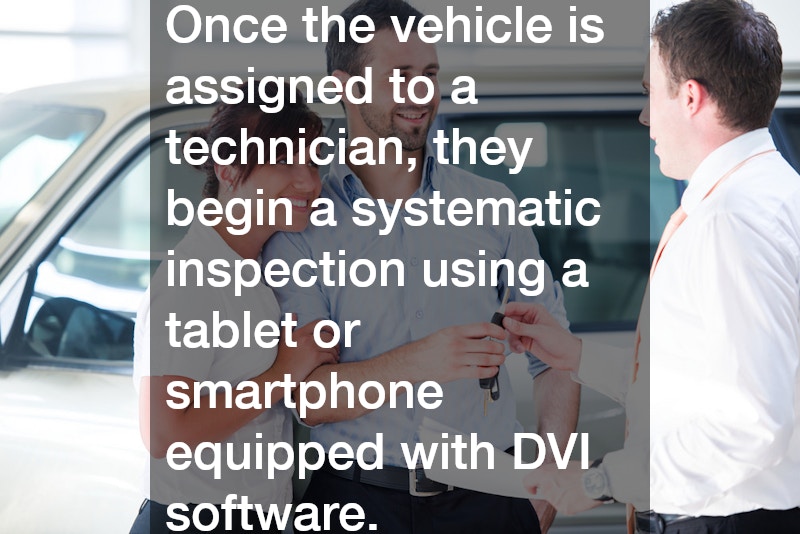
In today’s technology-driven world, the auto repair industry is undergoing a major transformation. One of the most significant changes is the adoption of digital vehicle inspections (DVIs), which are revolutionizing the way mechanics and auto shops assess and communicate vehicle health. Unlike traditional inspections that rely heavily on paper checklists and verbal explanations, DVIs leverage modern software and mobile technology to create a more transparent, efficient, and customer-friendly experience.
So, what exactly happens during a digital vehicle inspection? Let’s break it down step by step.
Initial Vehicle Intake
The process typically begins when a customer brings their vehicle into the shop for a routine service or reports a specific issue. During the intake process, service advisors log the customer’s information, vehicle details, and any reported symptoms into a digital platform. This digital entry sets the stage for a streamlined inspection and allows technicians to track findings and recommendations more efficiently.
Comprehensive Visual and Diagnostic Check
Once the vehicle is assigned to a technician, they begin a systematic inspection using a tablet or smartphone equipped with DVI software. The software provides a standardized checklist, tailored to the make, model, and mileage of the vehicle. This checklist covers essential systems such as:
-
Engine and transmission
-
Brakes and suspension
-
Tires and alignment
-
Battery and electrical systems
-
Fluids and filters
-
Belts, hoses, and other wear items
The technician walks around the vehicle and performs a visual inspection, just like in traditional methods. However, the difference lies in how they document their findings. Instead of jotting down notes or marking a piece of paper, they use the device to take detailed photos and videos of components. For example, if the brake pads are worn down, the technician may capture a close-up photo or video to show the extent of wear.
Real-Time Data Entry and Transparency
As the inspection progresses, the technician enters their observations directly into the digital platform. Each item on the checklist is usually marked with a color-coded status:
-
Green indicates the component is in good condition
-
Yellow suggests a watch item or something to monitor
-
Red signals an immediate safety concern or required repair
This color-coded system makes it easy for both the technician and the customer to quickly understand the severity of any issues found.
Evidence-Based Recommendations
One of the biggest advantages of digital vehicle inspections is the ability to provide customers with visual proof of issues. Rather than simply telling someone they need new tires or a coolant flush, the technician can attach photos, short video clips, and even diagnostic scan results directly to the inspection report.
These visual elements add a layer of credibility and trust, as customers can see the exact condition of their vehicle’s components. It removes a lot of the skepticism and confusion that can sometimes arise in traditional mechanic-customer interactions.
Instant Communication with the Customer
After the inspection is complete, the service advisor reviews the report and prepares it for the customer. Through email or text message, the customer receives a link to their personalized inspection report. The report is easy to navigate, often featuring photos, videos, technician notes, and a breakdown of recommended services.
This digital communication empowers customers to make informed decisions. They can review the inspection at their convenience, call the shop with questions, or even approve repairs online—no need to wait at the counter or play phone tag with the service advisor.
Approval and Service Planning
Once the customer has reviewed the findings, they can choose which repairs or services to authorize. Some digital platforms even offer pricing estimates and payment options right within the report. If additional services are declined for the moment, they can be digitally scheduled for future visits, and the system will remind both the shop and the customer at the appropriate time.
This ability to prioritize and plan helps customers manage costs while ensuring their vehicle stays in top condition over time.
Record Keeping and Long-Term Benefits
All inspection data is stored digitally, providing both the shop and the customer with a detailed maintenance history. This is especially valuable for long-term vehicle ownership or when preparing to sell a vehicle. A well-documented digital record of consistent inspections and repairs can boost a car’s resale value and offer peace of mind to buyers.
From the shop’s perspective, digital records improve workflow efficiency, reduce paperwork, and help track technician performance and vehicle trends. It’s a win-win situation for everyone involved.
.
